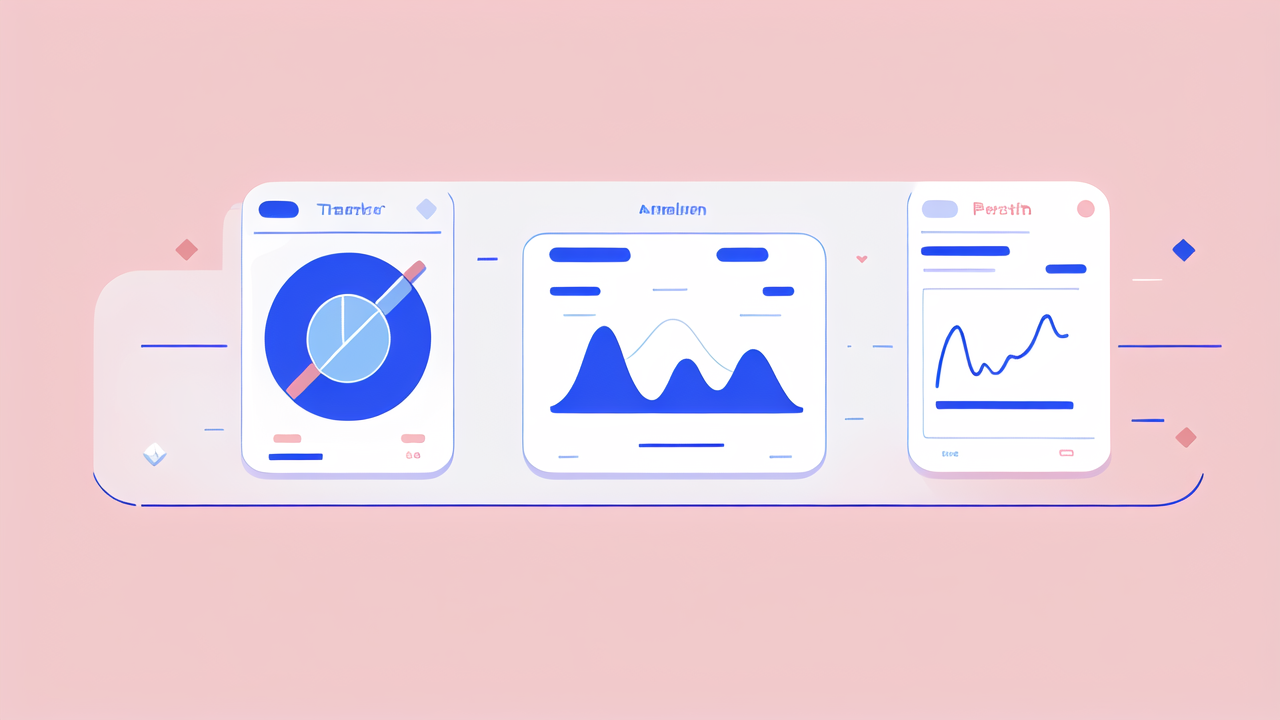Introduction to Fitness Trackers
Fitness trackers have become essential tools for individuals looking to monitor and improve their health. These wearable devices track various types of physical activity. They provide insights into steps taken, distance traveled, calories burned, and heart rate. With real-time data at your fingertips, it's easier to set goals, monitor progress, and stay motivated. The convenience and advanced technology of fitness trackers make them a popular choice for health-conscious users.

Key Features of Modern Body Measurement Trackers
Step Counting and Distance Tracking
One of the fundamental components of modern fitness trackers is their ability to count steps and track distance. Accurate step counting is crucial for those aiming to reach daily walking goals or monitor their overall physical activity levels. By leveraging sensors such as accelerometers and gyroscopes, these devices can discern between a step and other movements, ensuring a precise tally. The distance tracking feature then uses this step data, often combining it with personal user metrics like stride length, to estimate how far you've traveled throughout the day. This function empowers users to measure their progress towards distance-based goals, whether it’s for running, walking, or hiking.
Calorie Burn Estimation
Modern body measurement trackers boast a myriad of functionalities, and one pivotal feature is calorie burn estimation. These devices employ sophisticated algorithms to approximate the number of calories you expend throughout the day. By factoring in your activity levels, exercise intensity, and personal data such as weight and age, fitness trackers provide a personalized calorie burn count. This feature is crucial for individuals monitoring their diet or pursuing weight management goals. It gives a tangible metric that can help to adjust eating habits and exercise routines for better results. Fitness trackers can thereby play an integral role in guiding users towards a balanced, healthy lifestyle.
Heart Rate Monitoring
Heart rate monitoring is an essential feature found in modern fitness trackers. It uses sensors to track heartbeats per minute, providing real-time insights into your cardiovascular health. This function is critical for determining exercise intensity and safely managing workout sessions. Fitness enthusiasts can use this data to optimize their training routines, aiming for heart rate zones that improve stamina, burn calories, and build endurance. Additionally, regular monitoring can detect irregular heart patterns, potentially alerting users to underlying health issues. Ultimately, this feature empowers individuals to make informed decisions about their physical activities and overall health.
Advanced Metrics in Fitness Tracking
Sleep Analysis
Fitness trackers now provide deeper insights with advanced metrics, such as sleep analysis. They go beyond measuring steps and heart rates to evaluating sleep patterns and quality. This feature utilizes motion sensors and heart rate data to track the duration and depth of your sleep stages, including light, deep, and REM sleep. It records when you fall asleep and wake up, giving an overall sleep score for better understanding your rest patterns. The analysis can offer recommendations for improving sleep habits, which is crucial since good sleep is linked to better overall health. By monitoring sleep trends over time, users can make informed decisions on lifestyle changes to enhance their well-being.
Stress Level Monitoring
Stress Level Monitoring is a pivotal feature in modern fitness trackers, aiding users in comprehending their daily stress levels. These devices use various sensors to analyze physiological data such as heart rate variability (HRV) to determine stress levels. By tracking this data continuously, fitness trackers can provide insights into when stress levels are elevated during the day and suggest periods of rest or mindfulness activities. Regular monitoring allows users to make lifestyle adjustments to manage stress effectively, thus promoting better overall health and wellbeing.
Blood Oxygen Saturation
Recognizing blood oxygen saturation as a vital sign, modern fitness trackers have integrated this feature to deliver deeper health insights. Blood oxygen saturation, also known as SpO2, indicates the amount of oxygen-carrying hemoglobin in the blood relative to the hemoglobin not carrying oxygen. Normal levels typically range from 95 to 100 percent, and levels below this range might signal health issues such as sleep apnea or heart conditions.
Today's advanced wearable devices utilize light-based sensors to non-invasively monitor blood oxygen levels, providing users with immediate feedback on their respiratory health. This functionality becomes particularly useful during sleep and high-altitude activities, where oxygen levels might fluctuate more. By consistently tracking SpO2, individuals can gain a clearer picture of their overall well-being and seek medical advice when unusual patterns are detected.
The Impact of Fitness Trackers on Personal Health
The introduction of fitness trackers into daily life has significantly reshaped how we approach personal health. These devices are not just a trend; they provide us with real-time insights that encourage a more active lifestyle. By tracking activities such as steps, distance, and calories burned, individuals can see their progress and are often motivated to set and achieve new fitness goals. Moreover, the heart rate monitoring feature has made it possible for users to keep an eye on their cardiovascular health, pushing them to engage in heart-healthy exercises. As a measurable impact, many people using fitness trackers have reported improvements in their overall physical health, including weight loss, increased stamina, and better sleep quality. With their ability to offer valuable data on our body's performance, fitness trackers have become an indispensable tool for monitoring and encouraging healthier habits. By empowering users with knowledge about their health, these devices are contributing to a more health-conscious society.
Integrating Fitness Trackers with Smartphones and Apps
Fitness trackers offer much more value when paired with smartphones and apps. These applications expand the functionality of the device, allowing users to view detailed data, set goals, and receive notifications. The integration process usually involves downloading a dedicated app, then connecting the tracker via Bluetooth. Once paired, users can access real-time stats, historical data trends, and even participate in community challenges. This synergy also enables push notifications for calls, messages, and reminders directly to the wrist, ensuring that users stay connected while on the move.
Choosing the Right Fitness Tracker for Your Needs
Making the decision to invest in a fitness tracker can be daunting with the wide range of options available. To choose the right fitness tracker for your needs, consider the following factors:
- Activity Level: Are you a casual walker or a fitness enthusiast? Select a tracker that aligns with the intensity of your workouts.
- Features: Prioritize what's most important to you – step counting, sleep tracking, heart rate monitoring, or GPS for example.
- Compatibility: Ensure the tracker pairs well with your smartphone or the software you intend to use.
- Comfort: It should be lightweight and comfortable enough to wear all day and possibly at night.
- Battery Life: Depending on your usage, you may want a fitness tracker with a long battery life to avoid frequent charging.
- Budget: They range from budget-friendly options to high-end models, so decide how much you are willing to spend.
- Design: If you'll wear it daily, choose a design that fits your style and is discreet enough for different occasions.
Evaluate these points and you'll be well on your way to finding a fitness tracker that suits your lifestyle and helps you reach your health goals.
Privacy and Data Security Concerns
Privacy and data security have become significant considerations for users of fitness trackers. As these devices gather vast amounts of personal health data, concerns arise about who has access to this information and how it's protected. Fitness tracker companies typically use encryption to safeguard data transfer and storage. However, users should be mindful of the privacy policies of the company they choose, as some may share data with third parties for research or marketing. It's essential to use strong, unique passwords and to understand the permissions granted to apps connected to fitness trackers. Regular software updates can also help in protecting personal information from potential security vulnerabilities. By staying informed and cautious, users can enjoy the benefits of fitness trackers while keeping their personal health data secure.
Future Trends in Body Measurement Technology
The landscape of body measurement technology is ever-evolving, pushing the boundaries of what's possible in personal health monitoring. As we look towards the future, several trends are set to redefine the capabilities of fitness trackers. One such trend is the integration of AI and machine learning, which will provide a much more personalized tracking experience by learning individual patterns and suggesting optimizations. Additionally, the incorporation of more sophisticated sensors will allow for monitoring a wider range of health metrics in real-time, such as hydration levels and advanced sleep tracking mechanisms.
Another anticipated trend is the emphasis on seamless connectivity with other smart devices, positioning fitness trackers not just as standalone devices but as integral components of the personal health ecosystem. This connectivity will enable trackers to communicate with home automation systems, offering reminders and adjustments to one's environment based on their physical state.
Moreover, there's a significant push towards non-invasive glucose monitoring, which when paired with fitness trackers could be a game-changer for people with diabetes. User interface enhancements and augmented reality features could also make interactions with trackers more engaging and intuitive. Lastly, with growing awareness about data privacy and security, future body measurement technologies are expected to have enhanced encryption and user-controlled data sharing options, ensuring that users' health data remains protected.




Leave a comment
This site is protected by hCaptcha and the hCaptcha Privacy Policy and Terms of Service apply.